Overview
The article titled “10 Essential Resources for Understanding ICD-9 Codes” serves as a vital guide for healthcare professionals aiming to navigate and comprehend ICD-9 coding effectively. It identifies key organizations and platforms, including:
- CareSet
- ASHA
- ACDIS
- among others
These resources offer essential tools, educational materials, and insights. They play a crucial role in enhancing coding accuracy, improving patient care, and ensuring compliance with billing practices. By addressing the complexities of medical classification, the article underscores the significance of these resources in the healthcare landscape.
Introduction
In the intricate landscape of healthcare, accurate coding practices are pivotal for ensuring effective patient care and operational efficiency. The evolution of ICD-9 codes has led to the emergence of various organizations and resources that empower healthcare professionals to master the complexities of coding.
From CareSet’s comprehensive Medicare data insights to the targeted resources provided by the American Speech-Language-Hearing Association, the significance of precise coding is underscored across multiple domains.
As healthcare providers navigate the challenges of coding compliance and reimbursement, leveraging expert insights and innovative tools becomes essential for optimizing patient outcomes and enhancing the overall quality of care.
This article delves into the critical resources and methodologies available for mastering ICD-9 coding, highlighting their profound impact on healthcare delivery and the future of patient management.
CareSet: Comprehensive Medicare Data Insights for ICD-9 Codes
CareSet excels in extracting and interpreting complex Medicare claims information, providing in-depth insights into diagnostic codes. By examining over $1.1 trillion in yearly claims data, CareSet empowers stakeholders to recognize treatment trends and address critical data gaps essential for precise classification and billing practices. This innovative approach enables medical practitioners to make informed decisions based on reliable information, significantly enhancing patient care and operational efficiency.
The impact of accurate diagnostic classification on patient care statistics is profound, directly influencing treatment outcomes and resource allocation. Recent trends indicate a one-time reduction of approximately 4 percent in discharge counts that began in 2012, underscoring the importance of accurate classification in understanding patient flow and service delivery. This reduction highlights how classification errors can lead to misinterpretations of patient needs and resource distribution.
Practical examples illustrate how medical providers leverage Medicare claims data for accurate diagnostic categorization. For instance, qualitative analyses have revealed unique strategies employed by medical professionals across varying levels of expertise, emphasizing the necessity for tailored training to improve documentation accuracy. As one expert remarked, ‘That’s pretty rare actually that you have the a-ha moment. In that case, um, I got hung up on the pulmonary valve. It wasn’t making sense, so the a-ha was when you saw the …you know, text book carcinoid picture.’ This perspective highlights the challenges faced by programmers and the importance of ongoing education.
Expert insights emphasize that precise diagnostic classification is not merely a bureaucratic requirement but a vital component of effective patient care management. As the landscape of Medicare data analysis evolves, the insights derived from these codes will remain crucial in shaping medical strategies and improving patient outcomes. For pharmaceutical market access managers, understanding the nuances of medical classification is essential, as it directly influences market access strategies and the ability to engage effectively with healthcare providers.
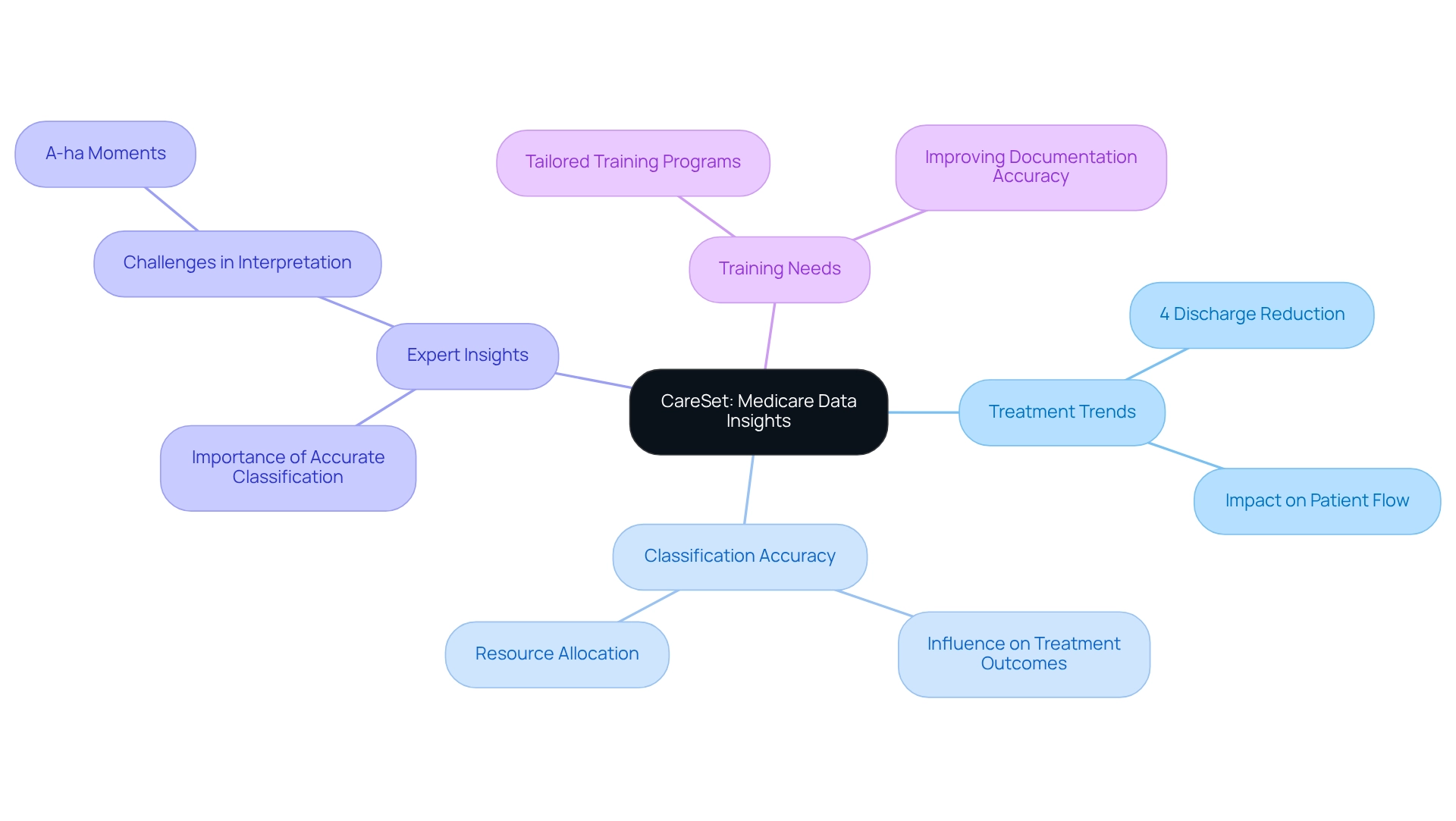
American Speech-Language-Hearing Association (ASHA): ICD-9 Resources for Speech Professionals
The American Speech-Language-Hearing Association (ASHA) provides a comprehensive array of resources focused on 1cd9 codes for speech-language pathology. These resources encompass detailed guidelines for classifying specific disorders, billing practices, and the latest updates on classification changes. ASHA’s dedication to delivering accurate and accessible information is crucial for speech professionals, facilitating improved patient care and ensuring appropriate reimbursement for their services.
For example, precise documentation of articulation and phonological disorders, which affect over 52% of children aged 4 to 6 years, is vital for effective diagnosis and targeted speech therapy interventions. Furthermore, ASHA’s resources have significantly enhanced the accuracy of speech-language pathologists, empowering them to navigate the complexities of billing and reimbursement with confidence. As noted by Namasivayam, A., while beneficial changes were observed in speech production among children with Childhood Apraxia of Speech (CAS) after treatment, only slight improvements in sentence-level speech clarity were noted, underscoring the critical importance of accurate representation in achieving successful treatment outcomes.
Additionally, statistics indicate that a substantial number of speech professionals utilize 1cd9 codes from ASHA’s classification resources, highlighting their significance in the field. HCUP databases play a crucial role in understanding trends in healthcare usage and costs, further emphasizing the importance of precise classification within the broader context of healthcare analytics. Expert opinions consistently highlight the necessity of accurate documentation in speech therapy, as it directly impacts treatment outcomes and the overall quality of care provided to patients. By leveraging ASHA’s extensive resources, speech-language pathologists can refine their billing practices, ultimately benefiting both their patients and their professional services.
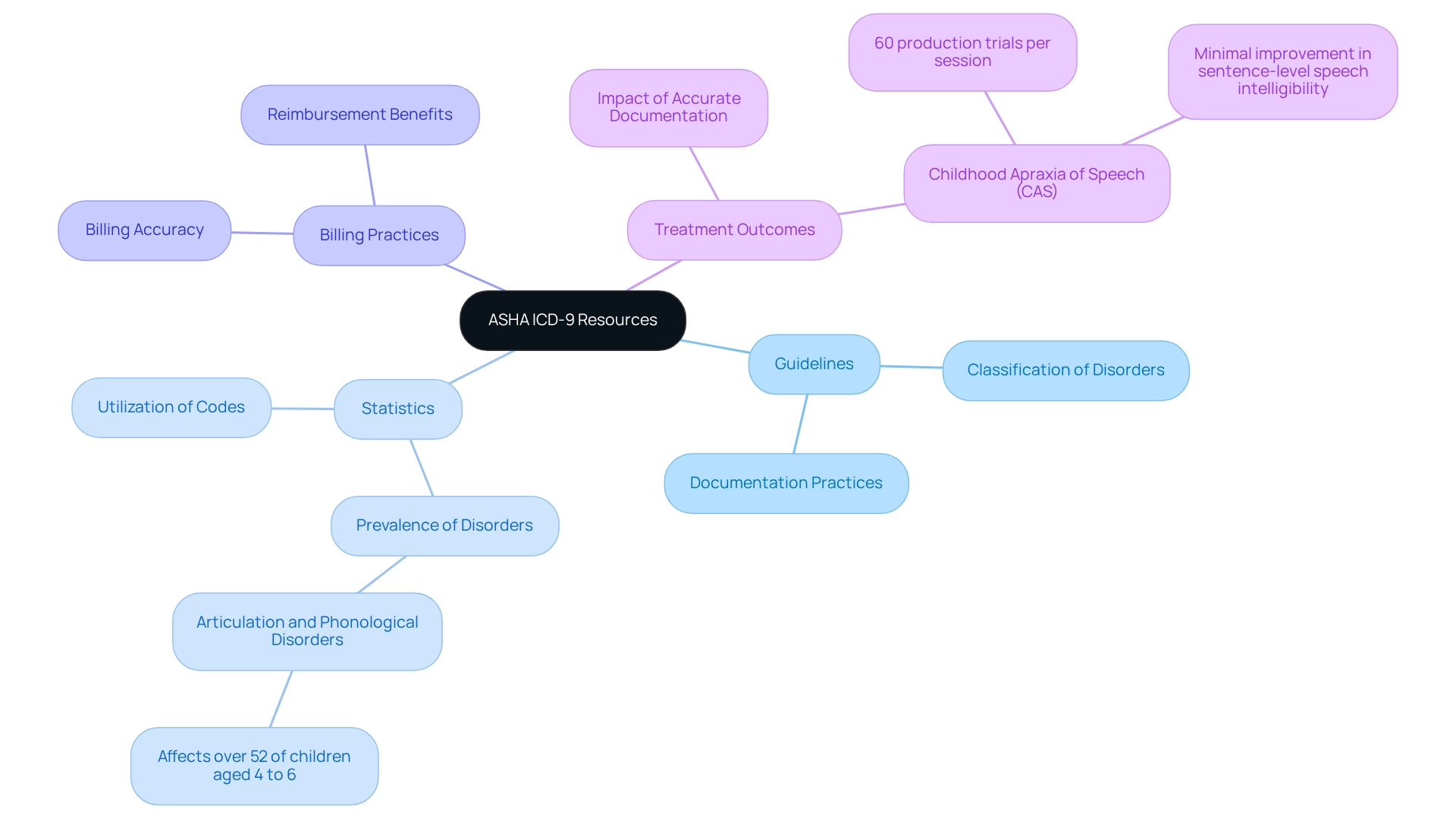
ACDIS: Essential Updates on ICD-9 Coding Practices
The Association of Clinical Documentation Improvement Specialists (ACDIS) plays a pivotal role in providing essential updates and resources for ICD-9 classification methods. Their extensive publications encompass programming guidelines, best practices, and educational resources designed to assist healthcare professionals in mastering the intricacies of programming. By adhering to ACDIS updates, providers can significantly enhance their documentation accuracy, which is vital for compliance with evolving classification regulations and ultimately leads to improved patient outcomes.
Recent compliance rates in ICD-9 classification have showcased remarkable improvements following the introduction of ACDIS guidelines in 2025. These updates represent the latest optimal methods, underscoring the importance of thorough documentation in capturing all relevant secondary diagnoses. Expert insights from ACDIS indicate that precise documentation not only impacts compliance but also influences reimbursement processes. As Cheryl M. Manchenton, RN, BSN, senior inpatient consultant at 3M Health Information Systems, articulates, “Obtaining more thorough documentation significantly impacts APR-DRG weights,” highlighting the critical nature of accurate documentation.
Furthermore, the CDI Strategies publication includes a Q&A on CDI productivity policies, offering additional context on current discussions surrounding clinical documentation improvement. Real-world examples demonstrate the effectiveness of ACDIS resources in enhancing documentation accuracy. A case study focused on educating physicians about the significance of accurate documentation revealed that increased awareness led to improved billing practices and enhanced profiling data. This underscores the essential role of ongoing education in fostering compliance and improving outcomes.
In summary, leveraging ACDIS resources and staying informed about their guidelines is imperative for healthcare providers aiming to effectively navigate the complexities of ICD-9 codes classification. By implementing these optimal methods, organizations can ensure compliance, bolster documentation accuracy, and ultimately enhance patient care. Additionally, CareSet’s integration of over 100 external data sources further emphasizes the importance of comprehensive information in facilitating effective practices.
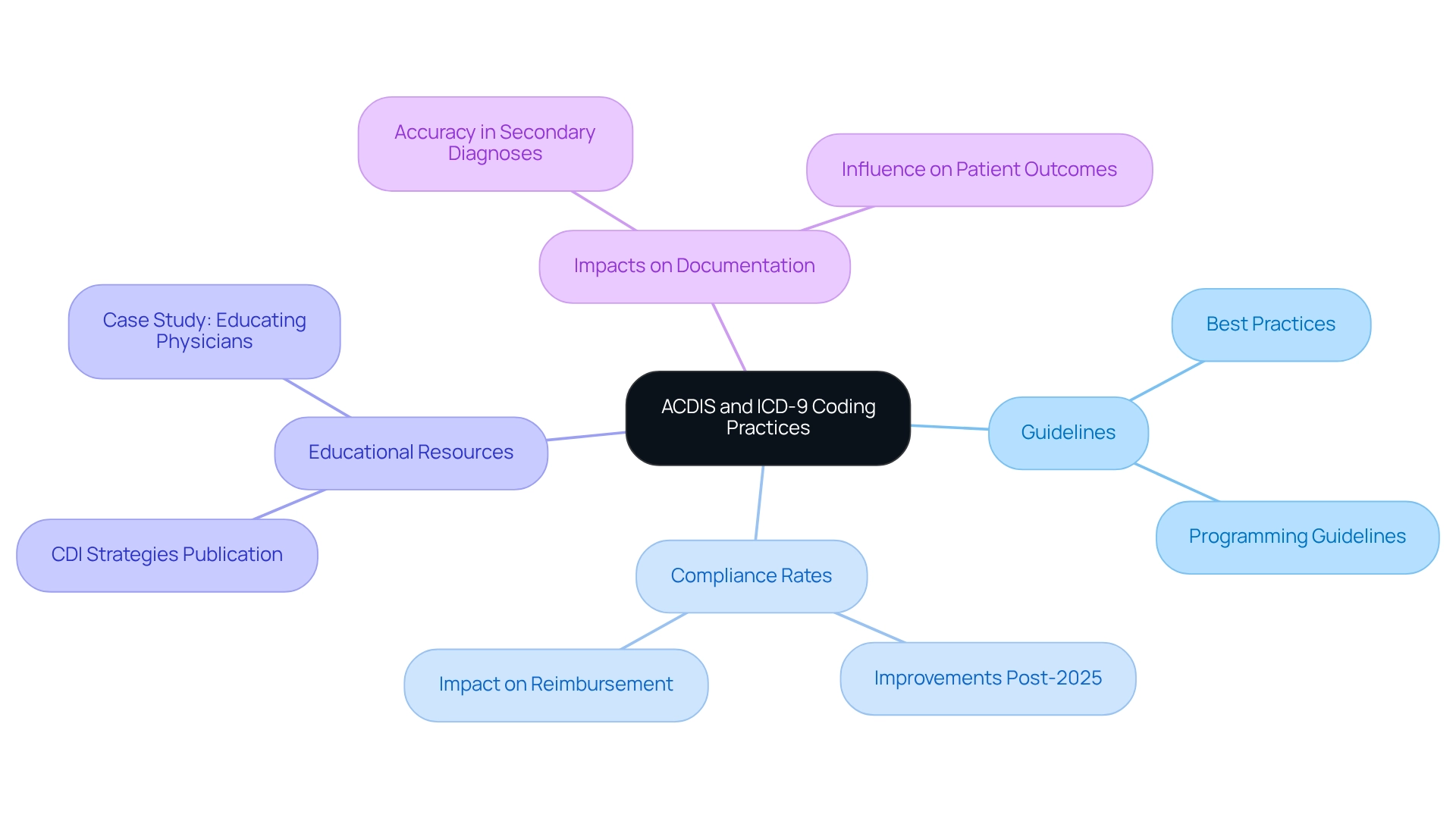
FindACode: Detailed ICD-9 Code Information for Healthcare Professionals
FindACode serves as an indispensable resource for medical professionals seeking comprehensive information on diagnosis codes. This platform offers detailed descriptions, guidelines, and programming tips, empowering users to efficiently search for specific codes and explore related options. By integrating over 100 external data sources into its analysis, FindACode enhances methodologies, providing a broader context and more precise data essential for proper reimbursement and compliance with healthcare regulations, where the significance of detailed 1cd9 codes is paramount, as they directly influence billing accuracy. Experts assert that precise programming is crucial for effective market access and patient engagement strategies. Continuous updates to clinical practice guidelines, such as those for hypertension, necessitate the use of FindACode to ensure documentation practices remain current and accurate, thereby improving compliance and reimbursement outcomes.
Healthcare organizations utilizing FindACode have reported significant improvements in compliance and precision, underscoring the platform’s effectiveness. Specific instances, including [insert specific organization or outcome], highlight how FindACode has equipped these entities to navigate the complexities of medical classification adeptly. Coding specialists advocate for the use of FindACode, equipping medical professionals with the vital tools to enhance their billing processes. As we approach 2025, new resources and features on FindACode are expected to emerge, further facilitating accurate medical classification and adherence in an evolving healthcare landscape.
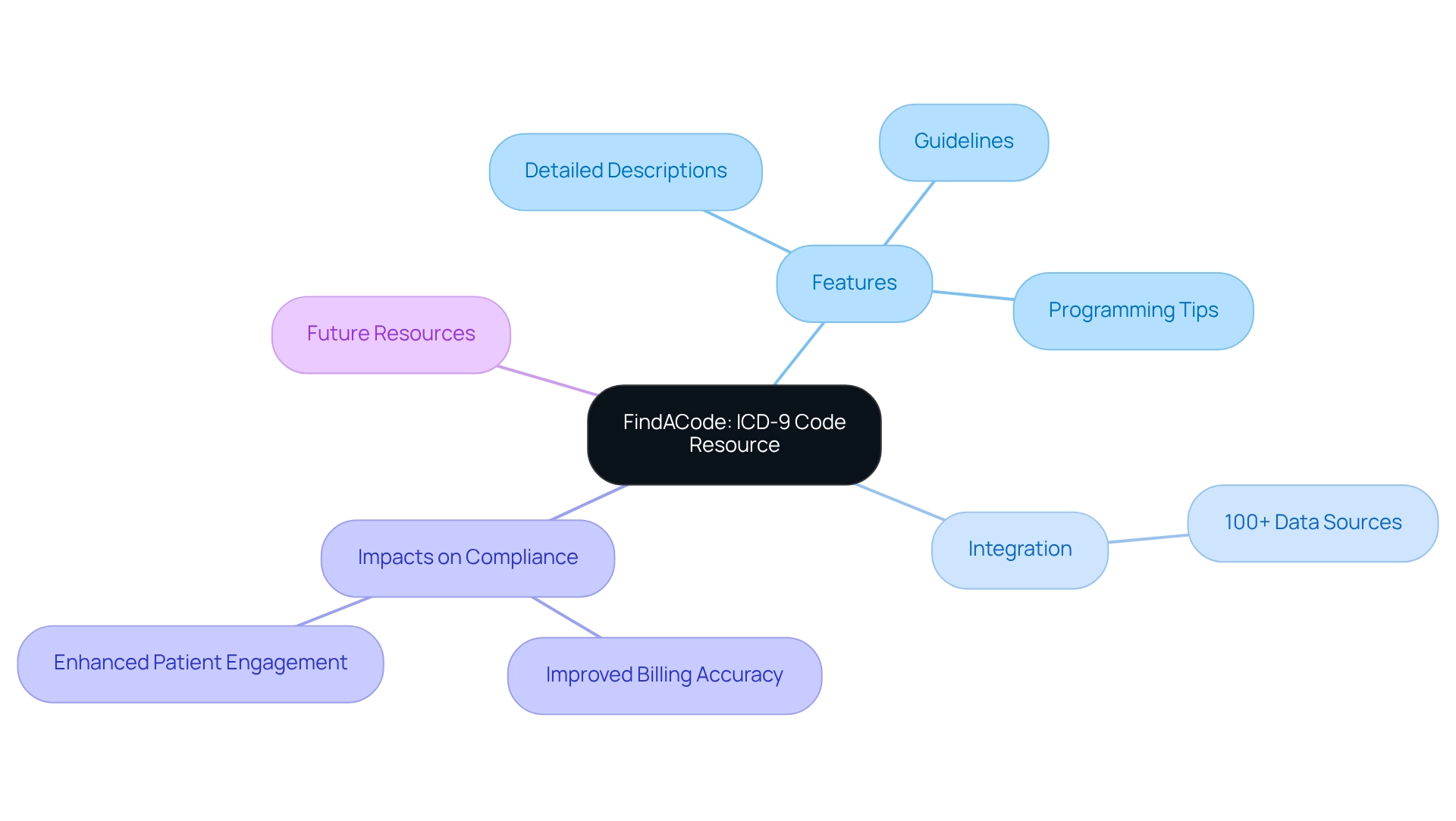
MDedge: Practical Insights on Applying ICD-9 Codes
MDedge provides a comprehensive array of practical insights and articles that concentrate on the effective application of 1cd9 codes, NDC, and HCPCS codes across diverse clinical scenarios, particularly within the framework of Medicare treatment pathways. Their resources encompass case studies, expert insights, and programming advice designed to assist service providers in the precise implementation of codes within their practices. A recent case study on the long-term impacts of concussion exemplifies how healthcare professionals have effectively leveraged MDedge insights to refine their classification processes, particularly in managing patients with extended symptoms. This underscores the critical role of accurate programming in ensuring optimal patient care outcomes and facilitating the transition from diagnosis to treatment.
Statistics indicate that the influence of MDedge articles on 1cd9 codes is substantial, with numerous professionals reporting enhanced accuracy and efficiency after using them. As Rachel L. Marek, MD, notes, “Our findings show that this role is diverse and rooted in the local medical system practices,” which emphasizes the variability in classification practices and the ongoing need for education regarding Medicare claims data.
Real-world examples illustrate that healthcare providers who actively engage with MDedge resources not only enhance their documentation skills but also contribute to improved healthcare delivery. By integrating these practical applications of NDC and HCPCS codes, practitioners can ensure they are equipped to navigate the complexities of classification and related Medicare treatment pathways, including Medicare A, B, and D benefits. Ultimately, this results in improved patient outcomes and streamlined operations within their clinical environments.
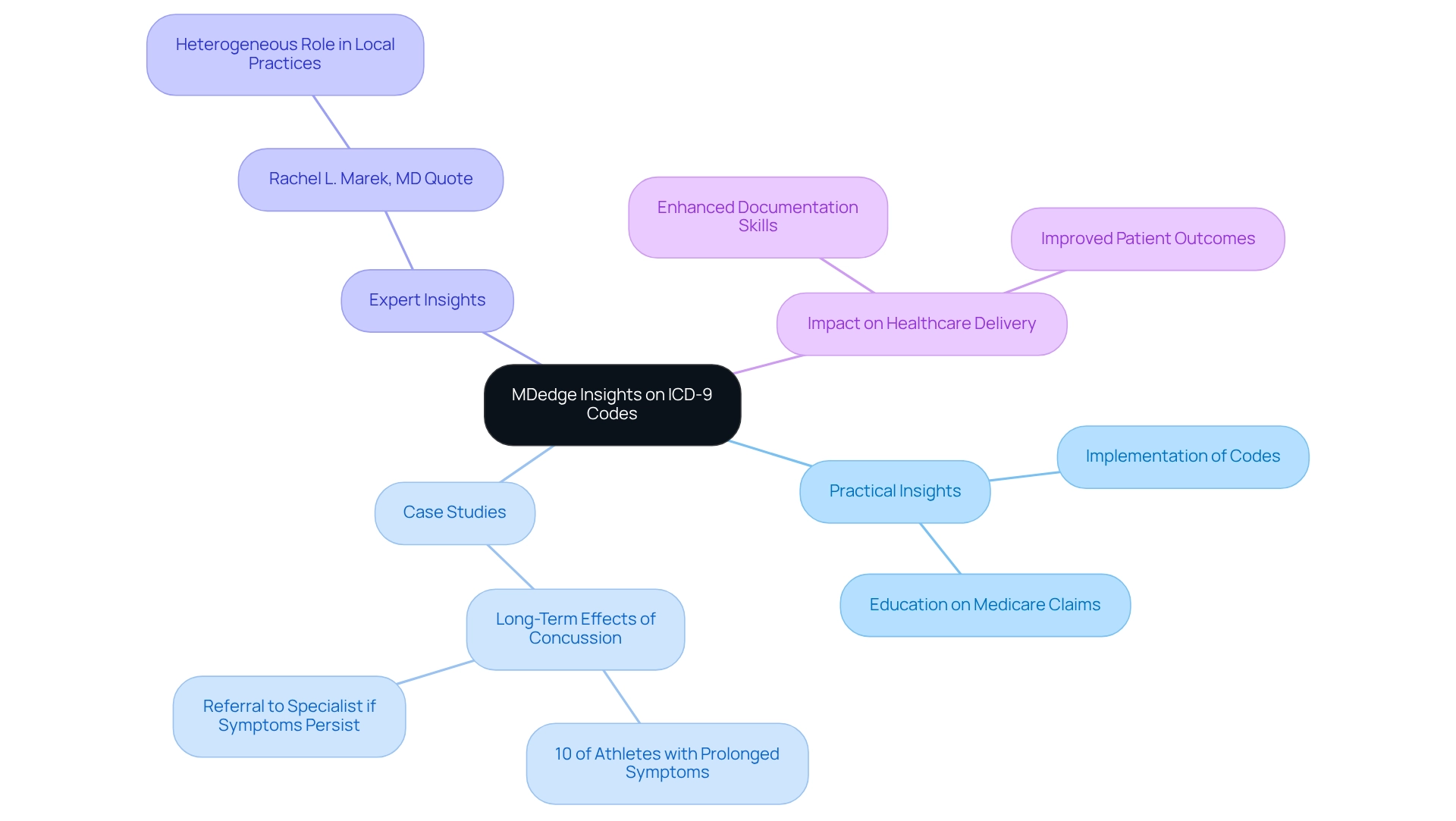
NACCHO: Public Health Resources for ICD-9 Coding
The National Association of County and City Health Officials (NACCHO) offers vital public health resources that significantly enhance 1cd9 codes classification practices. Their extensive materials encompass programming guidelines, public health data, and practical tools tailored for effective implementation within community health settings. By leveraging NACCHO resources, public health professionals can achieve precise classification of health conditions, which is crucial for effectively monitoring disease prevalence and improving overall community health outcomes.
In 2025, the importance of accurate 1cd9 codes classification is paramount, as it directly impacts health statistics and research findings. Erroneous programming can lead to misrepresentation of health data, complicating efforts to meet community health needs. Notably, garbage codes X59 and Y34 account for 8.1% of overall injury fatalities in ICD-10 VR, underscoring the potential consequences of errors in classification methods. A study evaluating Vermont’s Electronic Death Registry System (EDRS) highlighted that, despite advancements in the accuracy and timeliness of death certificate completion, elevated error rates persist, emphasizing the need for ongoing improvements in classification practices.
Moreover, NACCHO’s resources have proven beneficial for community health professionals striving for accuracy in their work. By utilizing these materials, they can adeptly navigate the complexities of public health data management, ultimately resulting in improved health outcomes. As Michael S Rendall, PhD, from the University of Maryland, articulates, “Precise categorization is fundamental to understanding and addressing public health challenges.” The adoption of precise programming practices not only bolsters individual health initiatives but also strengthens the overall public health infrastructure.
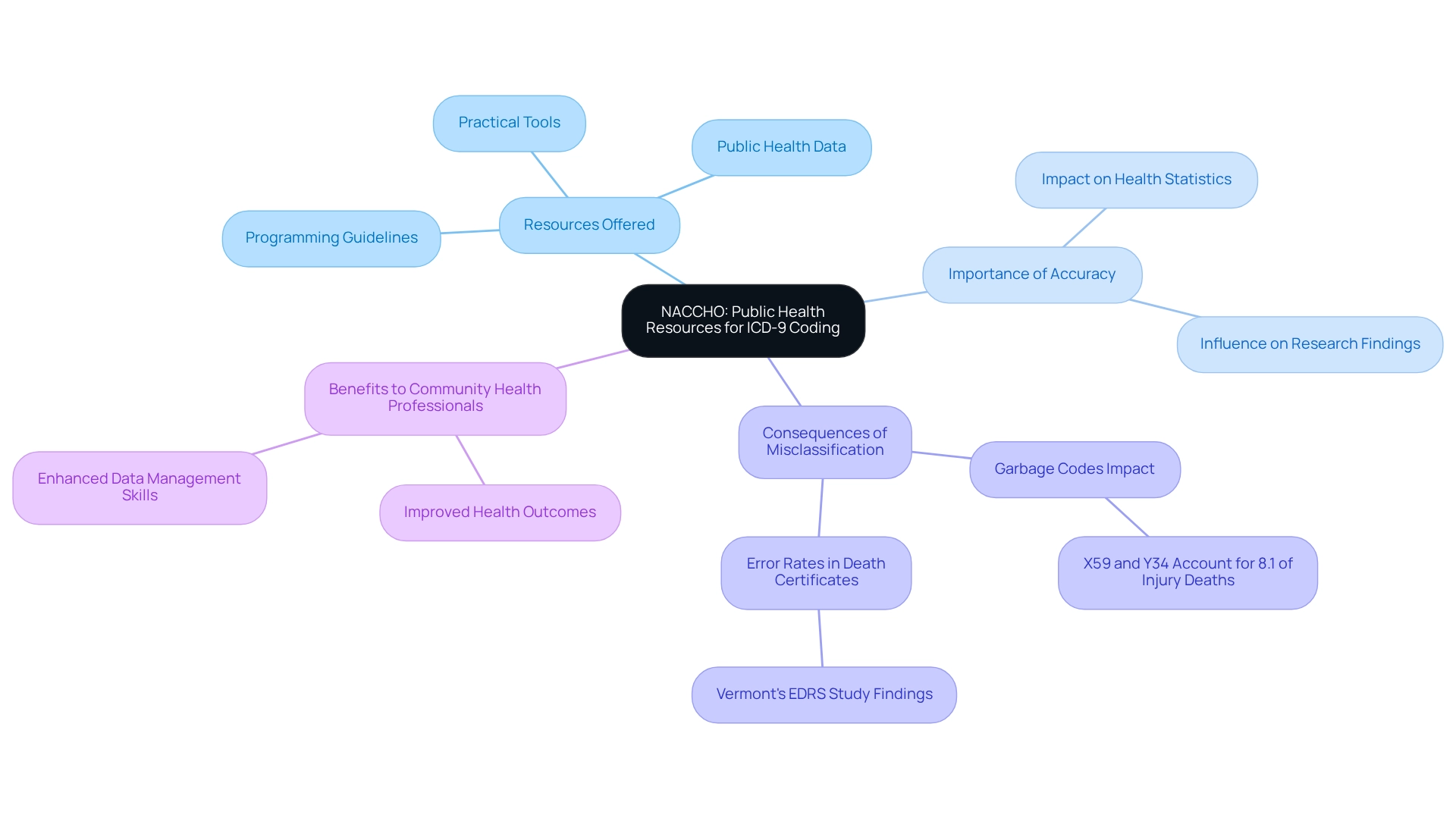
HCUP: Tools and Software for ICD-9 Coding Analytics
The Healthcare Cost and Utilization Project (HCUP) offers a suite of advanced tools and software tailored for the analysis of 1cd9 codes, which are critical for navigating Medicare treatment pathways. These resources empower healthcare organizations to conduct comprehensive analyses of classification patterns, utilization trends, and associated costs, thereby enhancing their understanding of patient journeys from diagnosis through treatment. By leveraging HCUP tools, organizations can markedly improve their documentation practices, resulting in more accurate records and informed decision-making regarding resource allocation and patient care.
For instance, organizations utilizing HCUP software have reported significant improvements in their accuracy, which directly correlates with enhanced financial sustainability and better patient outcomes. This is particularly crucial in the realm of Medicare claims data, where precise classification can influence treatment approvals and reimbursement rates. A case study highlighting the long-term benefits of accurate Hierarchical Condition Category (HCC) classification illustrates that improved documentation of patient complexity can lead to increased revenue from the Centers for Medicare & Medicaid Services (CMS). This additional income can subsequently be reinvested to elevate medical services for complex patient populations. Furthermore, insights from HCUP specialists underscore the importance of analyzing classification patterns and usage trends. As we look toward 2025, the focus on these analytics is expected to yield even greater benefits, as organizations refine their development practices through HCUP tools. Statistics indicate that the adoption of HCUP tools for 1cd9 codes analysis has risen, reflecting a growing recognition of their role in enhancing medical service delivery and understanding provider interventions. As Laura Blabac, Lead Technical Product Manager, aptly noted, the ability to ‘speak about health’ fluently and utilize data analysis tools will uniquely position professionals in the marketplace.
Moreover, the anticipated implementation of ICD-11 is expected to improve the quality of health data management across member states, further emphasizing the relevance of HCUP tools in adapting to these changes. By effectively harnessing these resources, medical professionals can ensure compliance with classification standards while simultaneously enhancing overall patient care. The historical significance of ICD in providing comparable statistics on causes of mortality and morbidity for over a century underscores the critical need for precise classification methods, which HCUP tools can facilitate.
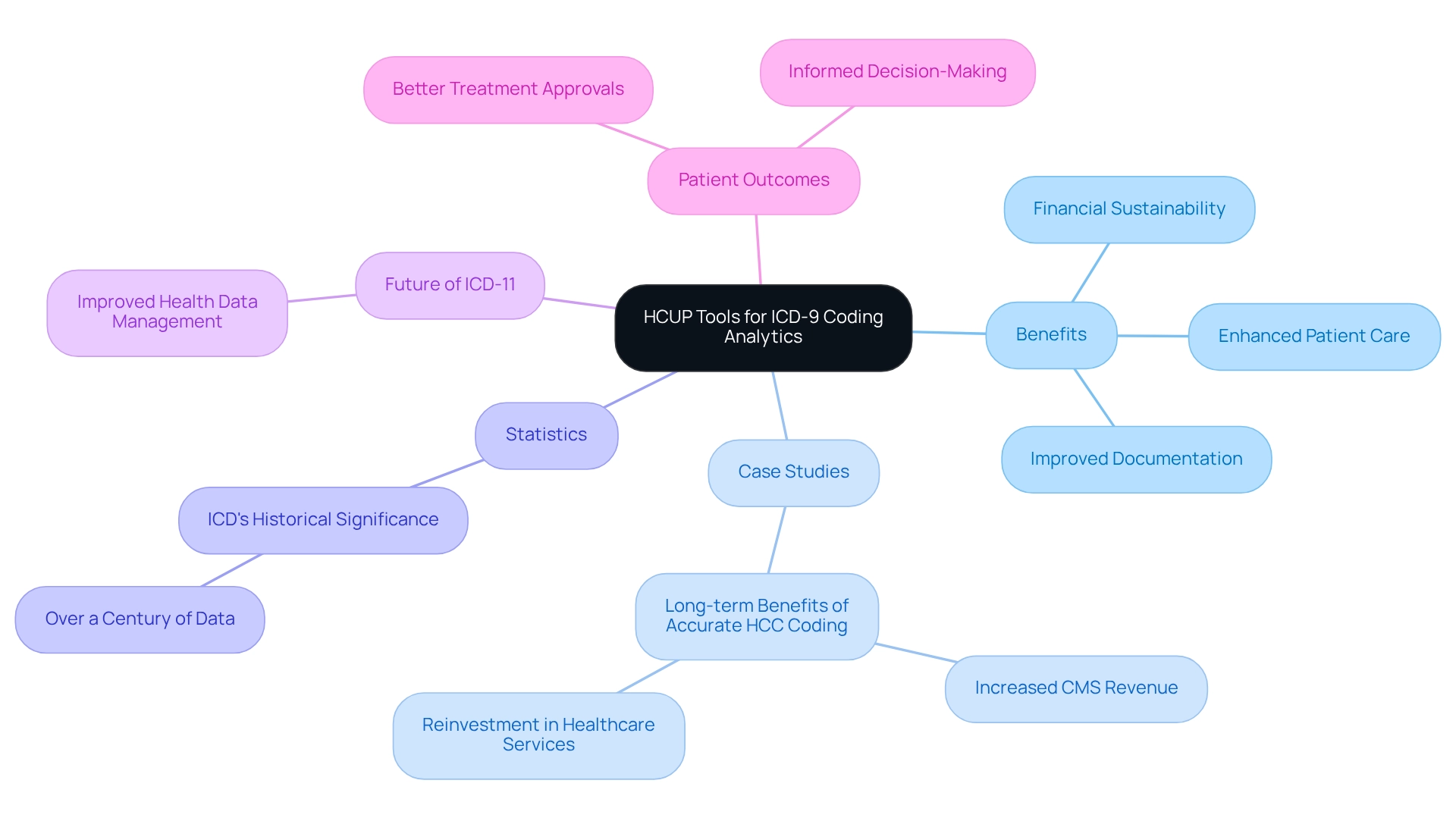
Build.fhir.org: ICD-9 Code Value Sets for Healthcare IT
Build.fhir.org provides standardized 1cd9 codes that are essential for IT professionals in the medical field. These value sets not only encourage interoperability among different medical systems but also guarantee accurate labeling practices. By utilizing the resources available on Build.fhir.org, healthcare IT professionals can significantly enhance the efficiency and precision of documentation within their organizations.
Statistics indicate that by 2025, interoperability enhancements related to 1cd9 codes have reached notable levels, underscoring the importance of these standardized value sets. Significantly, research has revealed that nearly 95% of Clinical Decision Support System (CDSS) alerts are trivial, emphasizing the essential requirement for efficient practices to improve data sharing and patient care.
Moreover, insights from medical IT specialists highlight that precise classification is essential for efficient data sharing and patient treatment. As Joseph C. Ahn noted, ‘However, further validation in diverse populations and integration with other established predictors is necessary before widespread clinical implementation.’
Case studies demonstrate how organizations utilizing Build.fhir.org’s 1cd9 codes have enhanced their coding accuracy, ultimately facilitating better patient outcomes and streamlined operations. CareSet’s comprehensive approach empowers stakeholders in the medical field by providing insights from over 62 million beneficiaries and 6 million providers, addressing immediate data needs while fostering long-term strategic growth for its partners in the medical industry.
As the medical landscape evolves, the incorporation of standardized code value sets remains crucial for promoting interoperability and ensuring high-quality medical delivery.
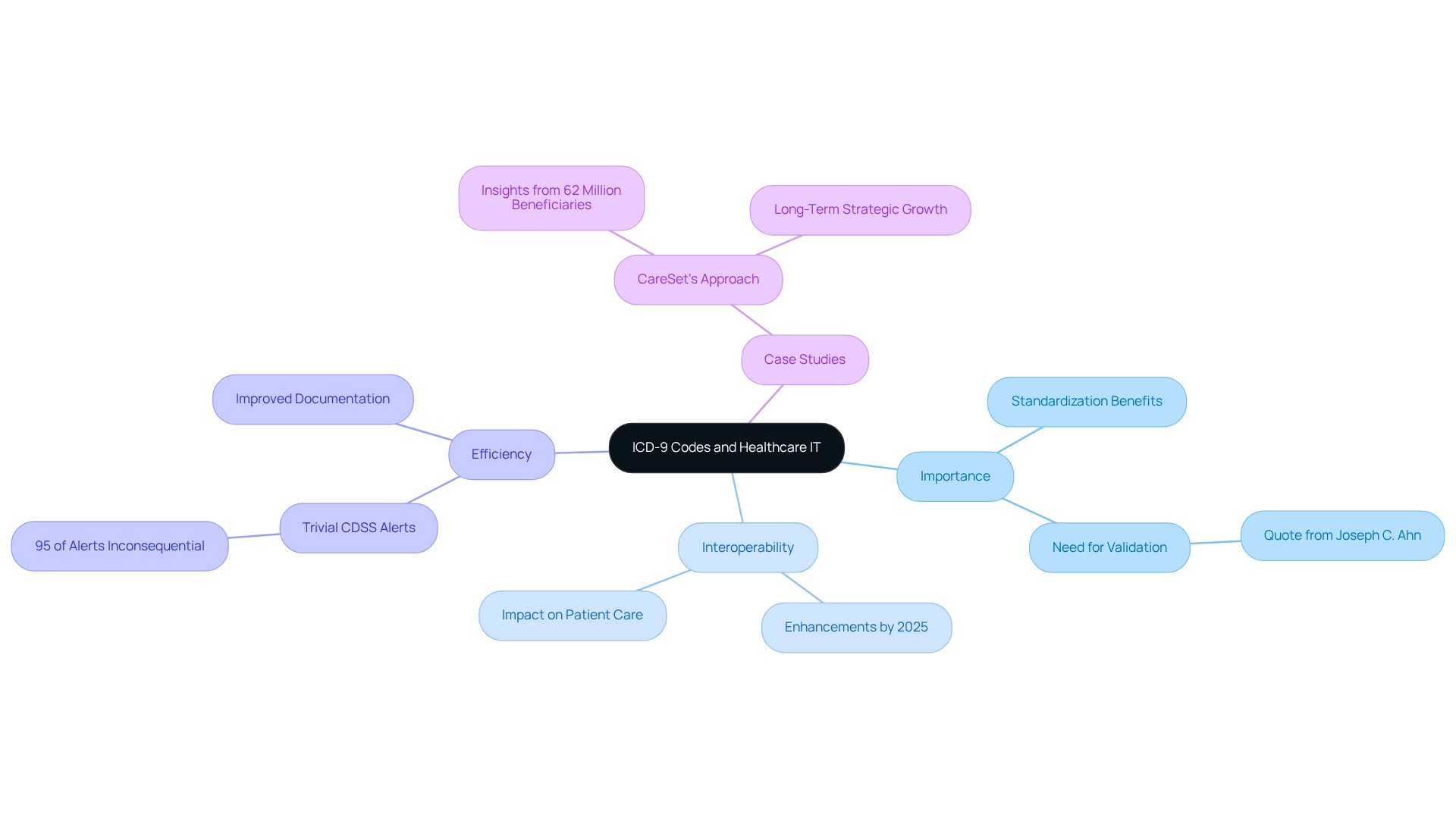
Amazon: Educational Materials for ICD-9 Coding
Amazon offers an extensive array of educational resources for ICD-9 classification, encompassing textbooks, guides, and online courses tailored for healthcare professionals. These resources are vital for enhancing programming knowledge and ensuring practitioners remain abreast of evolving standards. By leveraging these educational tools, healthcare professionals can markedly improve their programming accuracy—an essential factor for effective billing and documentation.
As we look to 2025, the latest educational materials available on Amazon underscore the ongoing necessity for continuous learning in the medical field. Statistics indicate that a substantial number of medical professionals have utilized these resources, underscoring their significance in skill development. CareSet, for example, integrates over 100 external data sources, providing comprehensive insights that can bolster the effectiveness of these educational materials. By employing CareSet’s data solutions, medical organizations can gain deeper insights into classification practices, leading to enhanced precision and improved patient care.
Case studies reveal that medical organizations leveraging both educational resources and CareSet’s data insights have witnessed remarkable improvements in classification accuracy, resulting in optimized revenue cycles. The impact of these resources is further reinforced by insights from educators, such as Julie Payette, who stated, “Education is the foundation of all we do in life. It shapes who we are and what we aspire to be.” This statement highlights the critical role of lifelong learning in programming. As the medical landscape continues to evolve, investing in high-quality educational resources from Amazon, alongside CareSet’s extensive data insights, remains a pivotal strategy for professionals striving to excel in medical classification.
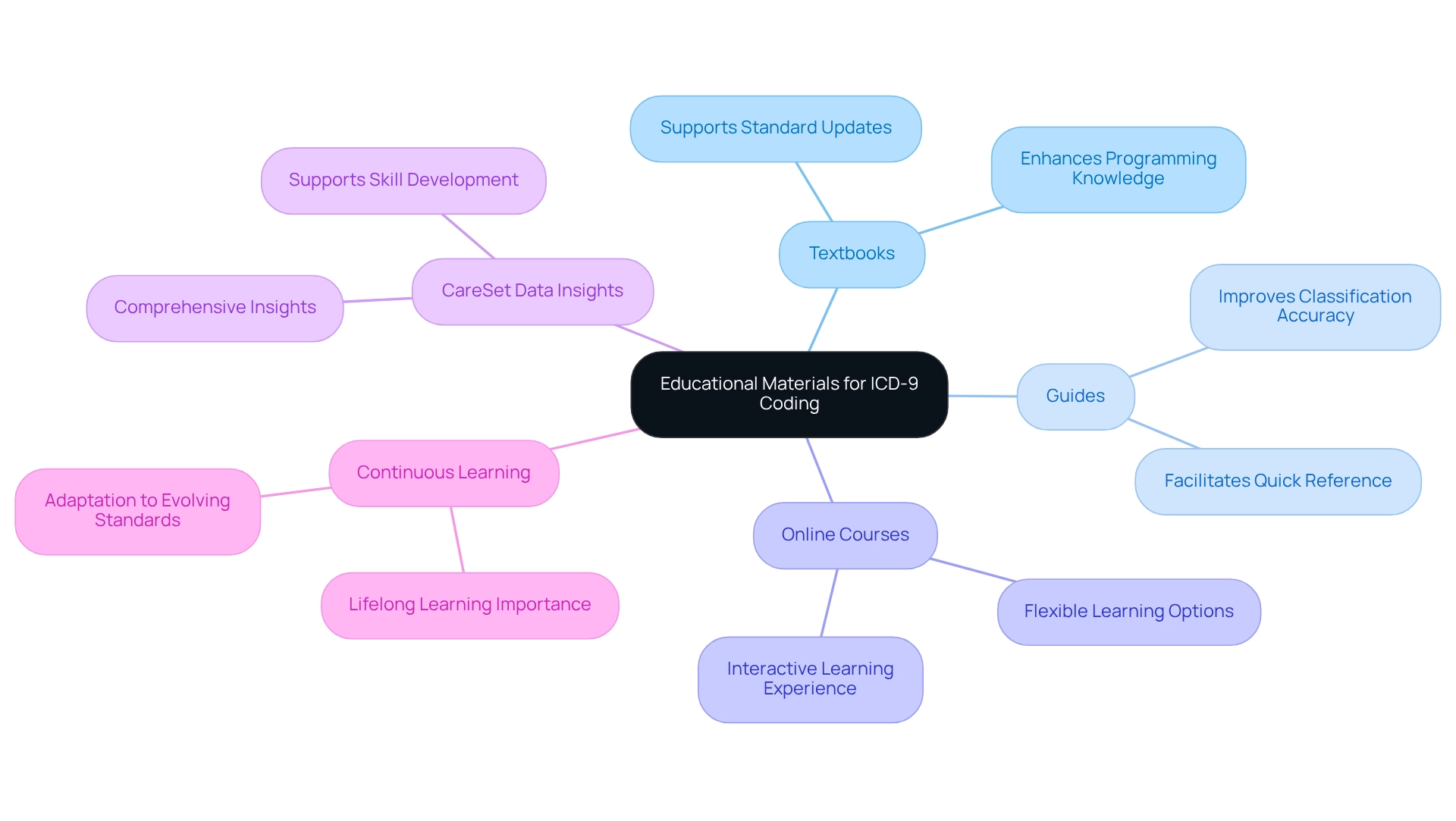
NCTRACKS: Guidance on Recognizing ICD-9 Codes
NCTRACKS offers essential support for medical practitioners in identifying and utilizing diagnosis codes, a crucial component in ensuring accurate billing methods that aid patients in navigating Medicare treatment pathways. Their comprehensive resources include tutorials, FAQs, and practical programming tips designed to simplify the complexities associated with ICD-9. By leveraging NCTRACKS guidance, medical providers have reported notable improvements in classification accuracy, which directly correlates with enhanced patient care quality and effective management of treatment interventions across Medicare A, B, and D benefits.
For instance, the implementation of NCTRACKS tutorials has resulted in measurable increases in classification precision among medical professionals, thereby decreasing billing errors and improving compliance with regulatory standards. Since the introduction of these resources, statistics indicate a rise in usage rates, reflecting a growing awareness of the importance of precise documentation in healthcare delivery. Additionally, with ACNC eliminating prior authorization requirements for over 1,900 physical and behavioral health procedure codes since 2023, the significance of accurate classification methods has become increasingly apparent concerning Medicare treatment approvals. Moreover, case studies, such as the North Carolina Poison Control (NCPC), demonstrate how thorough data collection and analysis can enhance classification methods. NCPC’s systematic approach to documenting poisoning cases has not only improved their response strategies but also highlighted the critical role of accurate classification in managing public health incidents and navigating treatment pathways. This advancement can be attributed to the guidance provided by NCTRACKS, which has positively influenced their coding practices and outcomes.
In summary, NCTRACKS serves as an indispensable resource for healthcare providers seeking to improve their coding accuracy and, in turn, the quality of care they deliver to patients. Insights from the August 2022 Provider Digest regarding claims payment review processes further underscore the necessity for updated provider materials and compliance, reinforcing the value of NCTRACKS resources in navigating the complexities of Medicare treatment pathways.
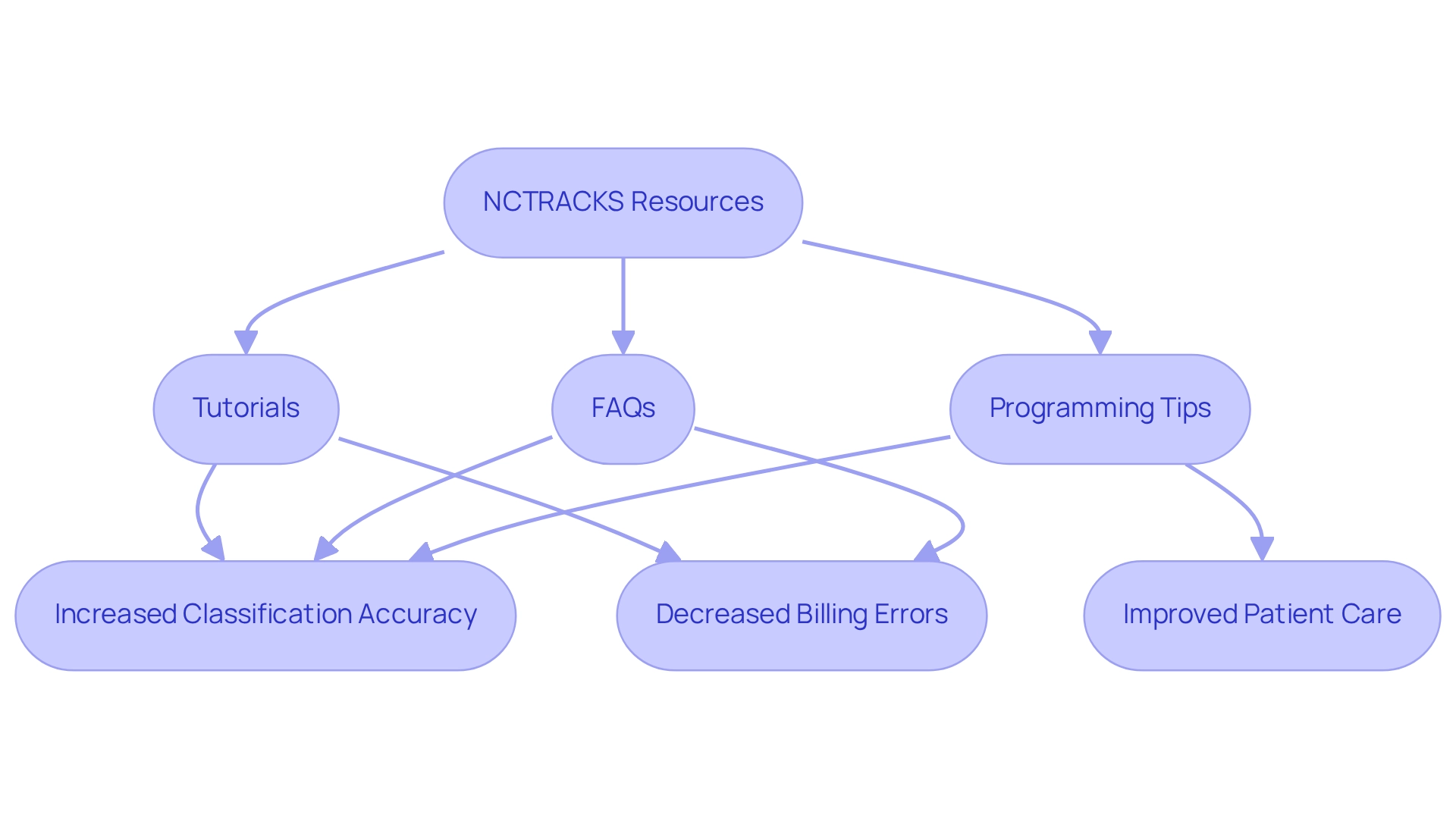
Conclusion
Navigating the complexities of ICD-9 coding is essential for healthcare providers aiming to enhance patient care and operational efficiency. The resources and methodologies discussed throughout this article—from CareSet’s comprehensive Medicare data insights to the educational materials available on platforms like Amazon—underscore the significant impact that accurate coding has on healthcare delivery.
Organizations such as the American Speech-Language-Hearing Association and the Association of Clinical Documentation Improvement Specialists provide critical tools and guidelines that empower professionals to improve their coding practices. These resources not only facilitate compliance with evolving regulations but also enhance treatment outcomes by ensuring that providers can effectively document and address patient needs.
Moreover, the integration of advanced tools like HCUP and standardized code value sets from Build.fhir.org illustrates the importance of data analysis and interoperability in optimizing coding practices. As the healthcare landscape continues to evolve, the emphasis on accurate ICD-9 coding will only grow, affecting reimbursement strategies and ultimately influencing the quality of care patients receive.
In conclusion, leveraging these diverse resources and committing to continuous education in coding practices are vital steps for healthcare professionals. By embracing these strategies, organizations can ensure they remain compliant, improve their coding accuracy, and enhance overall patient care, paving the way for a more effective and efficient healthcare system.


